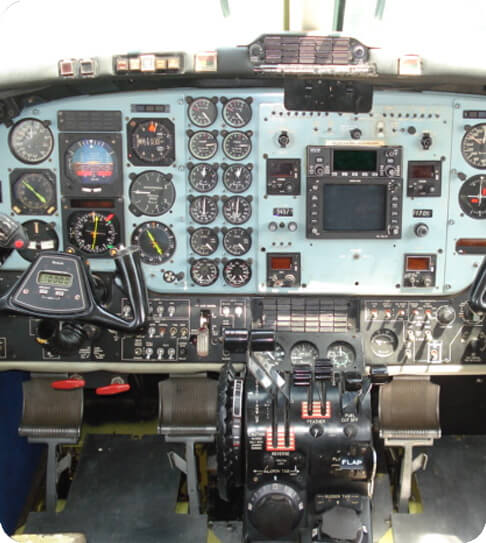
We are approved by Director General of Civil Aviation, Government of India for this course. Course is conducted as per syllabus and schedule provided by the DGCA. This course meets requirements of International Civil Aviation Organisation and European Aviation Safety Agency for working in foreign Airlines.
Avionics stream is the discipline that applies engineering, physics to design, analyze, manufacture, and maintain electronic systems. It is one of the oldest and broadest of the engineering disciplines.
Avionics Aircraft maintenance engineers inspect, maintain and repair the various electrical/electronic and structural components of planes and helicopters. They carry out routine pre-flight checks to ensure that an aircraft is safe and passengers will not be endangered. More detailed inspections are also carried out on each aircraft, where each component is examined and tested for damage and faults. Where problems are detected, aircraft maintenance engineers assess whether the component can be repaired, or it needs to be replaced.
Avionics aircraft maintenance engineers work in a range of environments such as indoors in workshops or the hangar, outdoors on the airfield, or on the flight-line where aircraft await departure. B2 AME can also be granted limited scope authorisation to certify Mechanical systems of aircraft.
Aircraft maintenance engineers use power tools such as pneumatic drills, grinders and riveters. Hoists are used to remove engines and other aircraft components, which can then be dismantled and tested using specialised equipment to check electrical signals and corrosion. In some cases components may be x-rayed or checked using magnetic inspection equipment to check for cracks that the naked eye may not notice. Aircraft maintenance engineers must wear protective clothing, such as overalls, safety glasses and ear muffs. In some cases, especially when working on the tarmac, they may also wear high visibility clothing and special shoes.
To become an aircraft maintenance engineer specialising in avionics, you usually need to complete an B2 Course at an AME school and one year apprenticeship on a particular aircraft type.
An aircraft maintenance engineer can only work on aircraft under the supervision of a licensed aircraft maintenance engineer.
Career in Avionics Stream
Recent Government reports suggest that nearly 72,900 jobs for technicians and AMEs will be created in India across Airlines and MRO sector by 2035. All the existing AME schools operating at full capacity cannot meet this demand. There is need to equip the students with skills that make them successful AMEs.
An Aircraft Maintenance Engineer draws a decent monthly salary. In the present Indian market an Airbus 320 or Boeing 737-900 rated AME easily gets about Rs. 2.00 Lakh per month whereas the total training cost is only around 8 lakh. An AME is paid even higher in international market depending upon his licence qualifications, proficiency in required skills, his/her job profile and work experience. AME are the highest paid engineers and command a salary just next to that of captain of the aircraft.
Employment Opportunities:
Domestic Airlines
All Domestic airline such as Air India, IndiGo, Go Air, Air India Express, SpiceJet, AirAsia India, Vistara, Alliance Air, Tru Jet, Blue Dart Aviation, Quickjet Airlines, Deccan Charters, Jal Hans, Pawan Hans, Taj Air, all international Airlines, Central and State Governments and many more.
All International Airlines
Virgin Atlantic Airways, Emirates, Ettihad Airways, Singapore Airlines, British Airways, Air France Singapore Airlines Qatar Airways Lufthansa and many more.
Other Career Opportunities
BSF, HAL, DRDO, NAL, NRSA, ARC, State Governments etc.
All aircraft operator, manufacturer and maintenance companies.